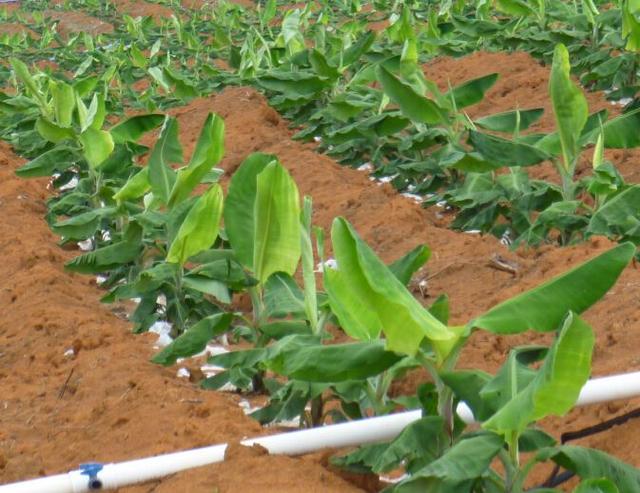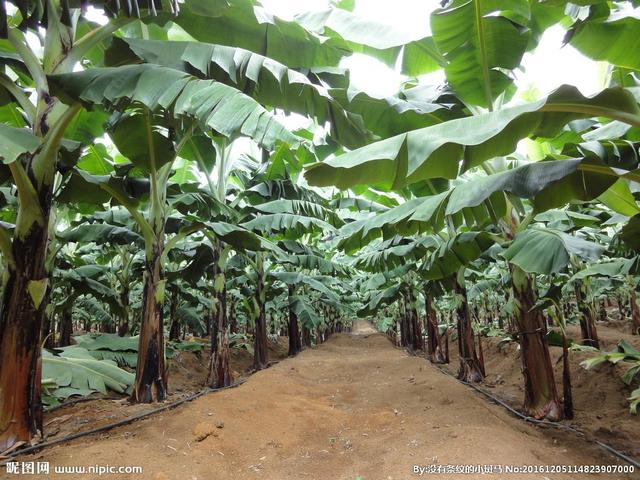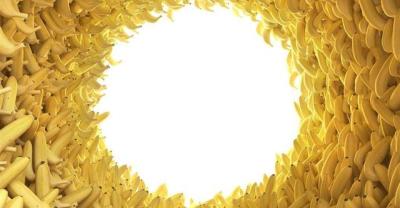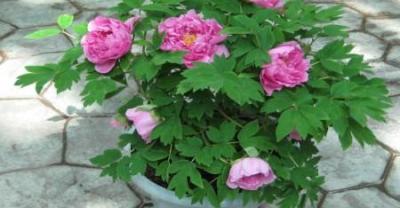A complete Collection of Banana planting techniques
Banana belongs to the genus plantain of the banana family, which is mainly produced in hot and humid areas of southeastern Asia. Bananas like warm and humid environment and are not tolerant to low temperature. they are suitable for planting in hot areas below 800m above sea level. the average plant yield is 50-60 jin and the average yield per mu is 5000-6000 jin.

Banana belongs to the genus plantain of the banana family, which is mainly produced in hot and humid areas of southeastern Asia. Bananas like warm and humid environment and are not tolerant to low temperature. they are suitable for planting in hot areas below 800m above sea level. the average plant yield is 18ml 25kg, the yield per mu is 3000 kg, and the highest yield per mu is 4500 kg. Banana is one of the four famous fruits in South China, with short growth cycle, high yield, annual supply to the market, sweet and delicious fruit, rich in nutrients and rich in a variety of vitamins. It is one of the most popular fruits among consumers. According to the Technical regulations for the production of Green Food, combined with the planting characteristics of banana and the experience of planting banana A-grade green food, the main cultivation techniques are as follows:
I. selection of place of origin
The producing area is selected when the annual average temperature is more than 20 ℃, the multi-year average value of extreme minimum temperature is more than 2.6-6.2℃, and the content of soil organic matter is high, PH 6.07.0. Far away from factories with sewage, waste residue and waste gas discharge, the environment is pollution-free. Farmland soil, agricultural irrigation and air quality meet the environmental quality standards of green food producing areas.

Second, seedling selection: high-quality tissue culture seedlings of high-quality and disease-resistant varieties such as Brazil and Williams were selected.
Third, organic fertilizer selection: biological liquid and biochemical organic fertilizer mixed with chicken manure, chicken feathers, pig and cow bones, banana leaf and banana stem, bran, bran and plant straw are retted at 50%, 60% humidity and fully matured after 20 min for 30 days.
IV. Selection and treatment of garden sites
1. Garden selection: in the selection of the base, soil samples should be collected in advance for testing to check whether the pesticide residues and heavy metal contents in the soil exceed the standard. The banana garden is built in the place where the transportation is convenient, the wind is protected from the wind and the sun, and in the microclimate, the frost is not heavy, the terrain is open, the soil is pollution-free, the soil is loose, the soil is fertile, the content of organic matter is high, the soil layer is deep, the water and fertility conservation is strong, the drainage and irrigation is convenient, and the groundwater table is low.
2. Garden land reclamation: after cleaning, leveling, ploughing and harrowing (plough depth above 1000px), land preparation (the border surface is determined according to planting specifications and planting methods, generally single row and single border width is 2.5m, double row and double border width is 5m). For planting banana in paddy field, high border deep trench is used, and the border ditch depth is more than 1500px; low border shallow trench is used for slope planting, and anti-inclined terraces are built according to contours.
3. Dig drainage and irrigation ditches: dig drainage and irrigation channels in the field.
4. Windbreak forest: windbreak forests should be planted in windy areas, and fast-growing tree species can be selected.
5. Colonization: planting in the pond (row spacing 2.5m, plant spacing 1.6m, mu 166plants; depth and width of hole 50 × 1250px), hole application of rotten chicken manure bio-organic fertilizer 2.5kg as base fertilizer. Generally spring planting in April (harvest period from March to April) and autumn planting in September (harvest period from August to October).

V. Water and fertilizer management
1. Fertilization: fertilizer is mainly applied with bio-organic fertilizer, supplemented by chemical fertilizer, with the scientific combination of nitrogen, phosphorus and potassium; fertilization adopts the principle of promoting, attacking and replenishing, applying frequently in the early stage, re-applying strong fetal fertilizer in the middle stage, and applying strong fruit fertilizer in the later stage. Nitrate fertilizer is prohibited in fertilization so as not to affect the quality.
2. Irrigation, drainage and irrigation: in case of drought after planting, water should be drenched to keep the soil moist on the border and hole surface, which is conducive to the restoration of root growth; pay attention to the elimination of stagnant water in rainy days. From September to March of the following year, the border surface is covered with rice straw for heat preservation and moisturization, especially the tissue culture seedlings planted in spring grow to the stage of big leaves and fruit development (July-December), which is the critical period of water supply, and the soil on the border should be kept moist, otherwise drought will affect the yield. Irrigation methods can be used such as drip irrigation, drip irrigation and sprinkler irrigation. Stop irrigation 15 days before harvest and increase the storage and transportation period.

- Prev

When will the eggplant be planted?
Eggplant is one of the favorite fruits and vegetables, and it is also one of the main vegetables in summer in our country. It is grown all over the country. The leaves, roots and stems of eggplant can be used as medicine.
- Next

The planting mode of agriculture
Monoculture is contrary to intercropping, where only one crop is planted on a piece of land, which is called monoculture, which has the advantage of being convenient for planting and management and field operation.
Related
- Fuxing push coffee new agricultural production and marketing class: lack of small-scale processing plants
- Jujube rice field leisure farm deep ploughing Yilan for five years to create a space for organic food and play
- Nongyu Farm-A trial of organic papaya for brave women with advanced technology
- Four points for attention in the prevention and control of diseases and insect pests of edible fungi
- How to add nutrient solution to Edible Fungi
- Is there any good way to control edible fungus mites?
- Open Inoculation Technology of Edible Fungi
- Is there any clever way to use fertilizer for edible fungus in winter?
- What agents are used to kill the pathogens of edible fungi in the mushroom shed?
- Rapid drying of Edible Fungi

